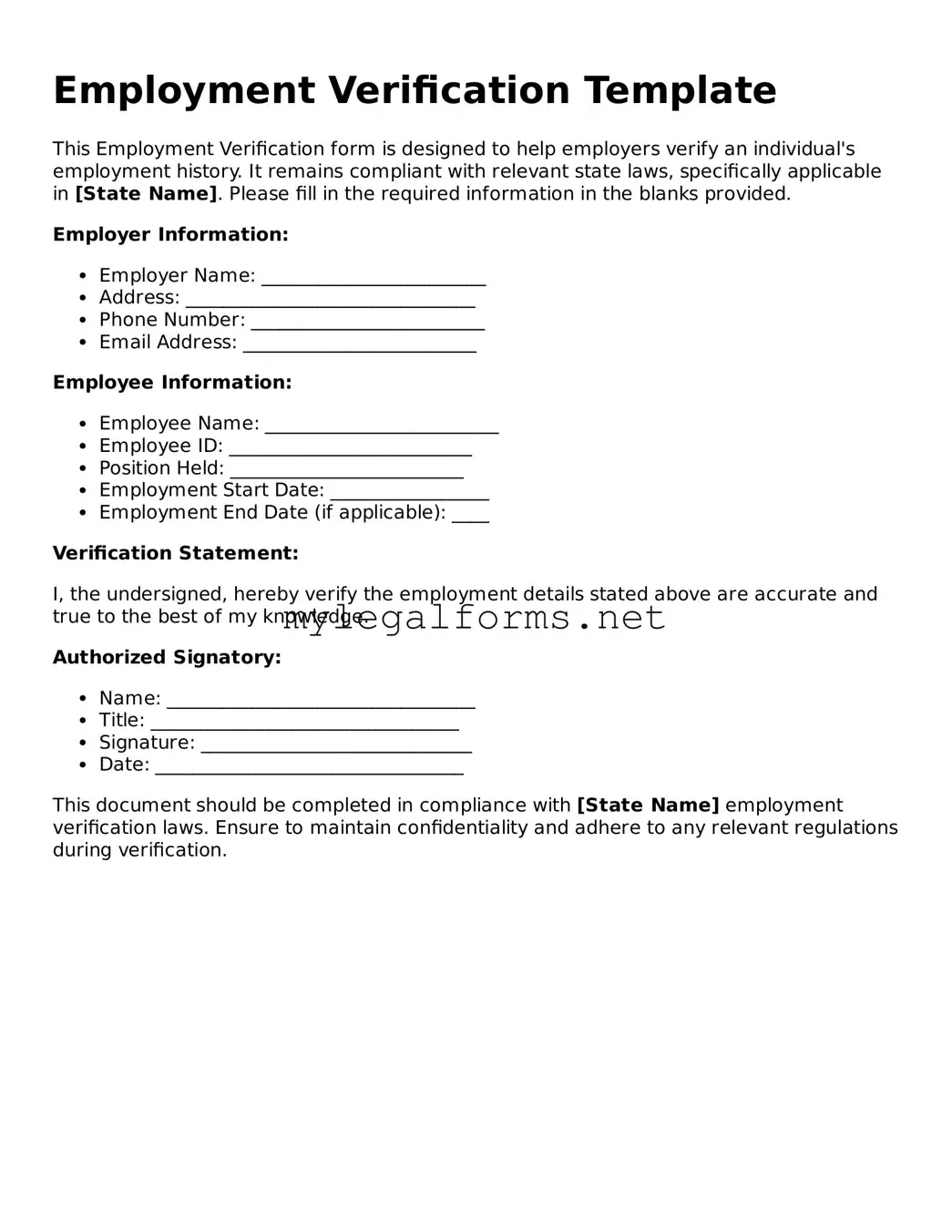Employment Verification Template
This Employment Verification form is designed to help employers verify an individual's employment history. It remains compliant with relevant state laws, specifically applicable in [State Name]. Please fill in the required information in the blanks provided.
Employer Information:
- Employer Name: ________________________
- Address: _______________________________
- Phone Number: _________________________
- Email Address: _________________________
Employee Information:
- Employee Name: _________________________
- Employee ID: __________________________
- Position Held: _________________________
- Employment Start Date: _________________
- Employment End Date (if applicable): ____
Verification Statement:
I, the undersigned, hereby verify the employment details stated above are accurate and true to the best of my knowledge.
Authorized Signatory:
- Name: _________________________________
- Title: _________________________________
- Signature: _____________________________
- Date: _________________________________
This document should be completed in compliance with [State Name] employment verification laws. Ensure to maintain confidentiality and adhere to any relevant regulations during verification.
